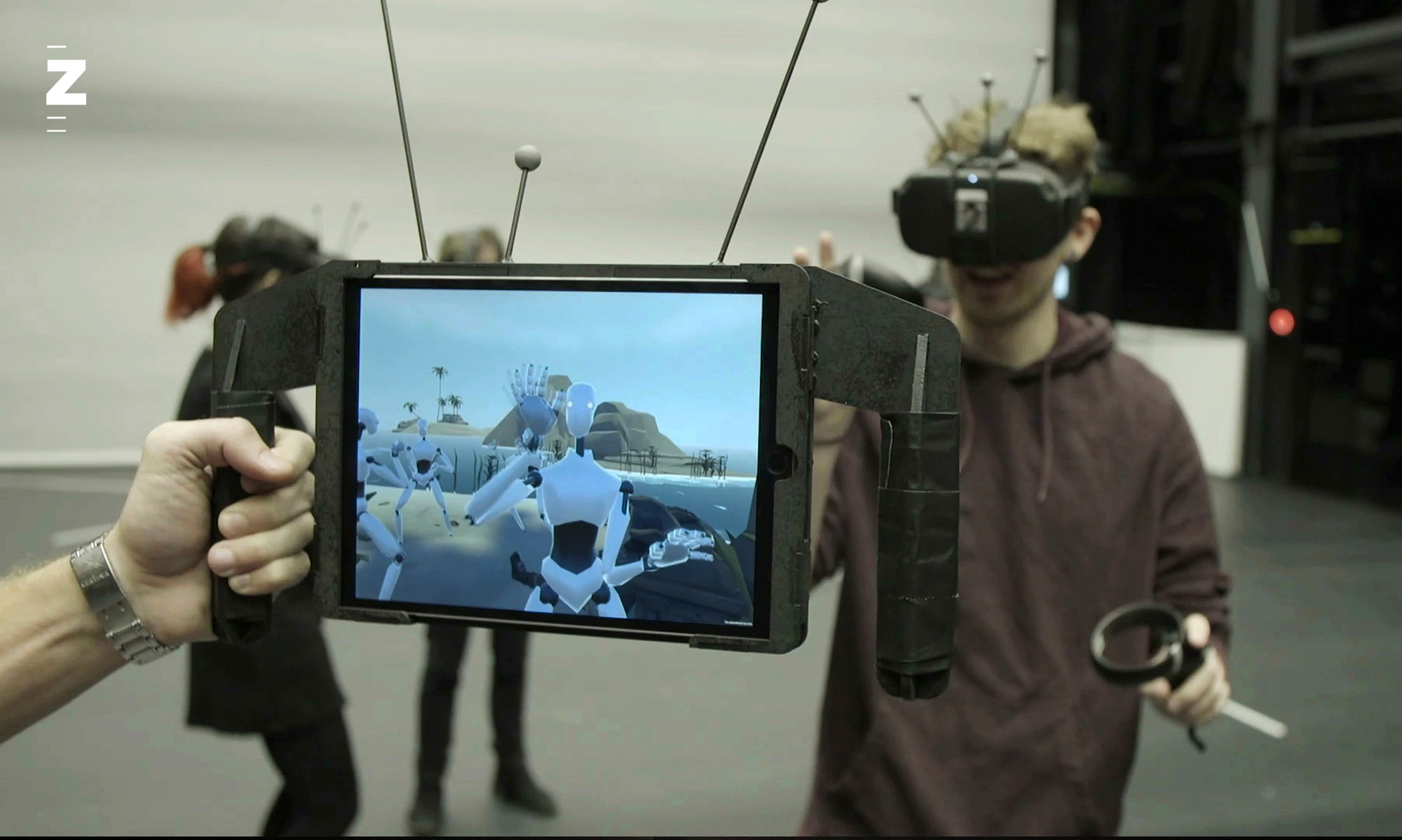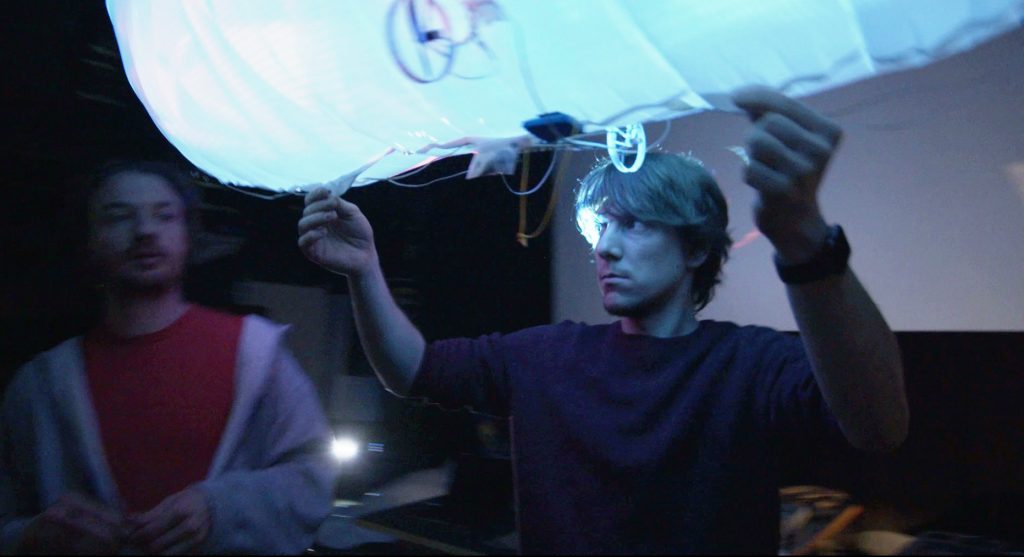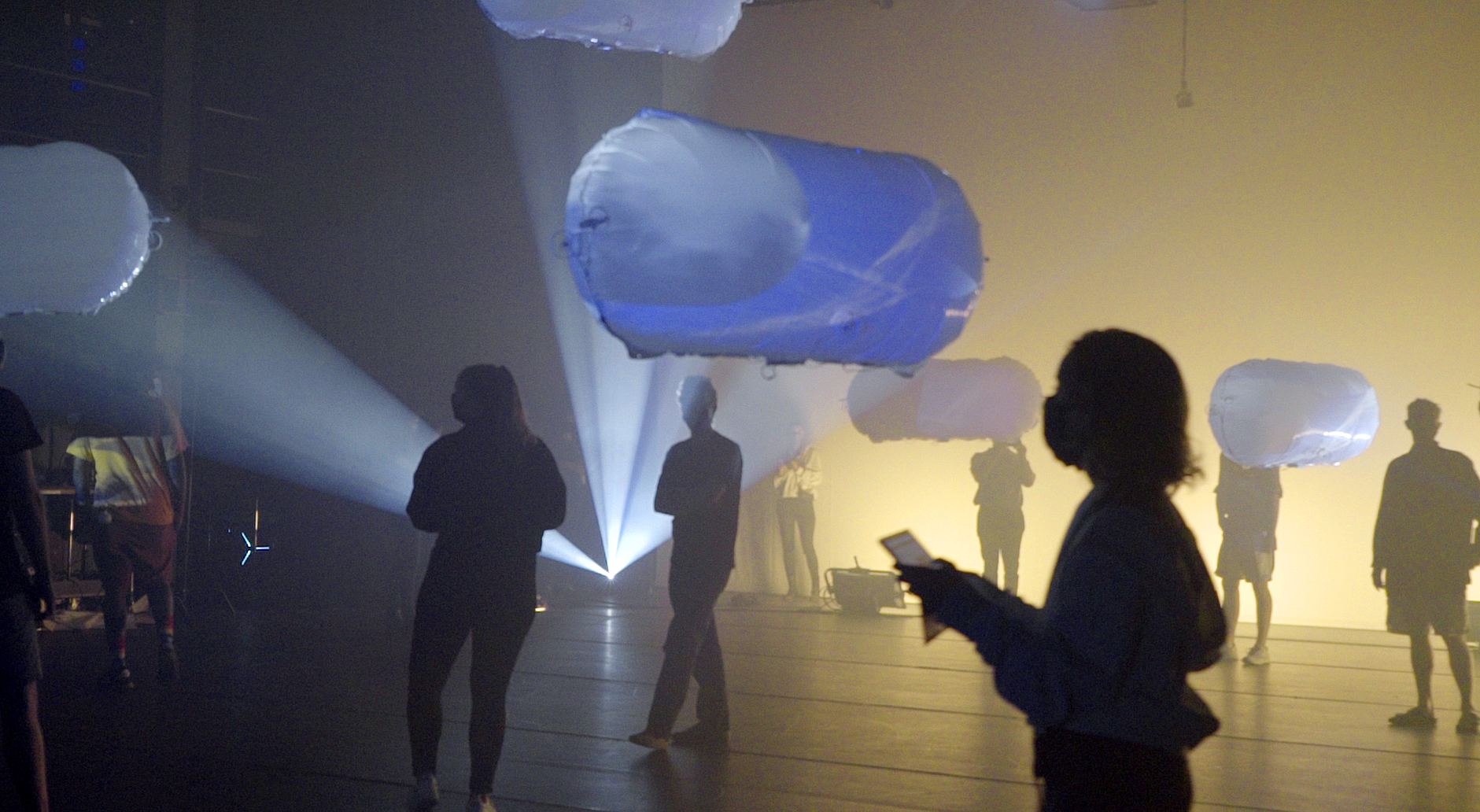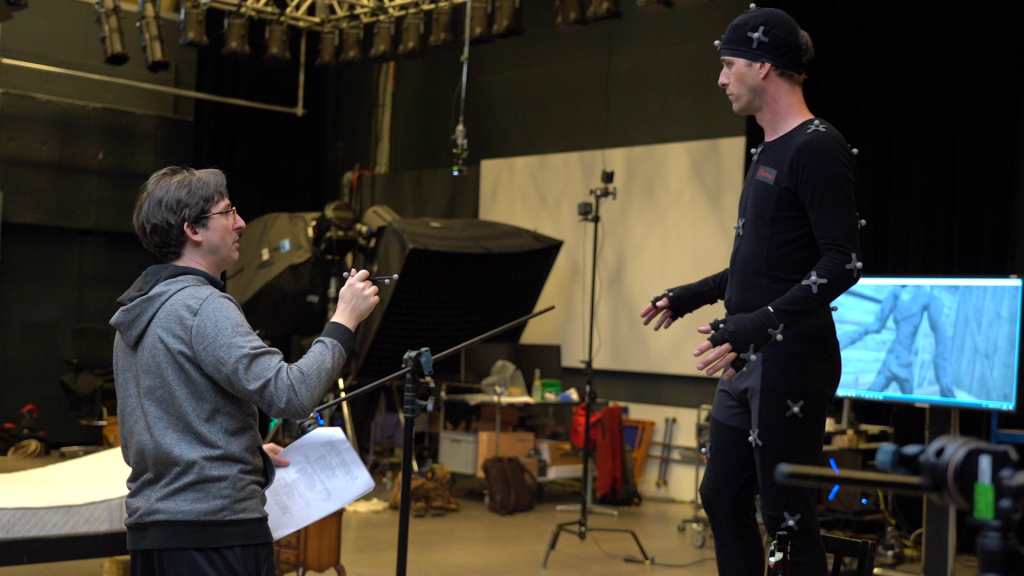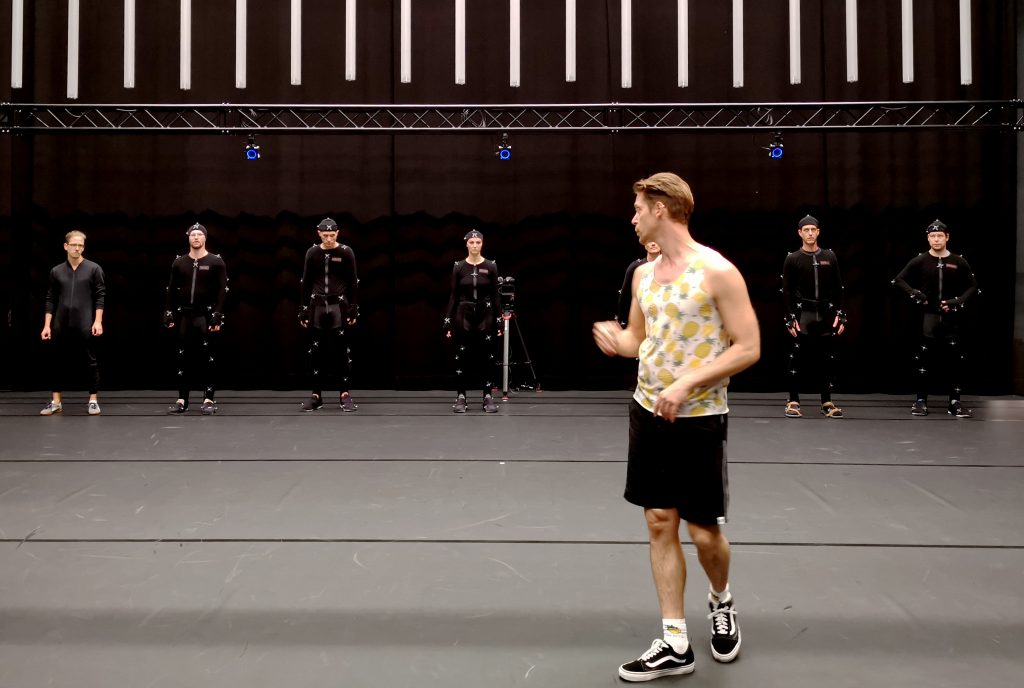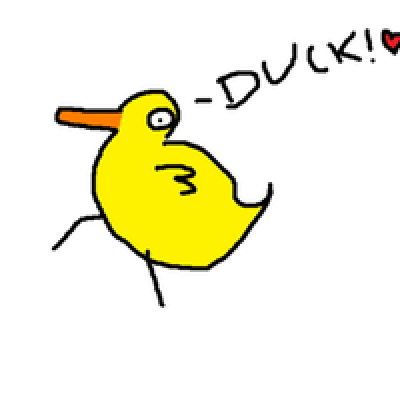The Helium Drone project seeks to explore the aesthetic properties of installations based on floating devices that can autonomously navigate in space. In its complete state it will be a flocking swarm of diverse drones in different forms and shapes, each behaving in its individual way and interact with each other and the spectators on the ground. It will use the tracking system for location and navigation and the projection mapping system to wrap them into dynamically created ‘skins’.
A technological groundwork is laid out, with the goal to design a framework to quickly prototype and build helium drones with different shapes and propulsion concepts that integrate easily with the current technical setup of the IASpace. This involves the research for suitable materials and processes to build the floating volume, design of mechanical structures, electronics and network protocols, the evaluation and testing of motor and servos and the integration of motion and sensor data for autonomous flying capabilities (among many other things).
Involving many different skills, from designing and building physical structures to programming behaviors and creating interactive textures that are projected onto the creatures, it will be attractive to a wide spectrum of disciplines and a playground to experience multidisciplinary teamwork. There will also be an open source toolkit with instructions that can be made accessible to the public.
CREW
Project lead, motion tracking, projection mapping: Martin Fröhlich
Robotics, motion control, sensor integration: Max Kriegleder
Micro-controller, networks, protocols: Joel Gähwiler
Materials, rapid prototyping, construction: Roman Jurt
Theory: Serena Cangiano
Further infos on the project:
Everything you need to know about Blimpy on GitHub
Here you can find the paper on the Blimpy framework as presented at the ISEA 2020.
